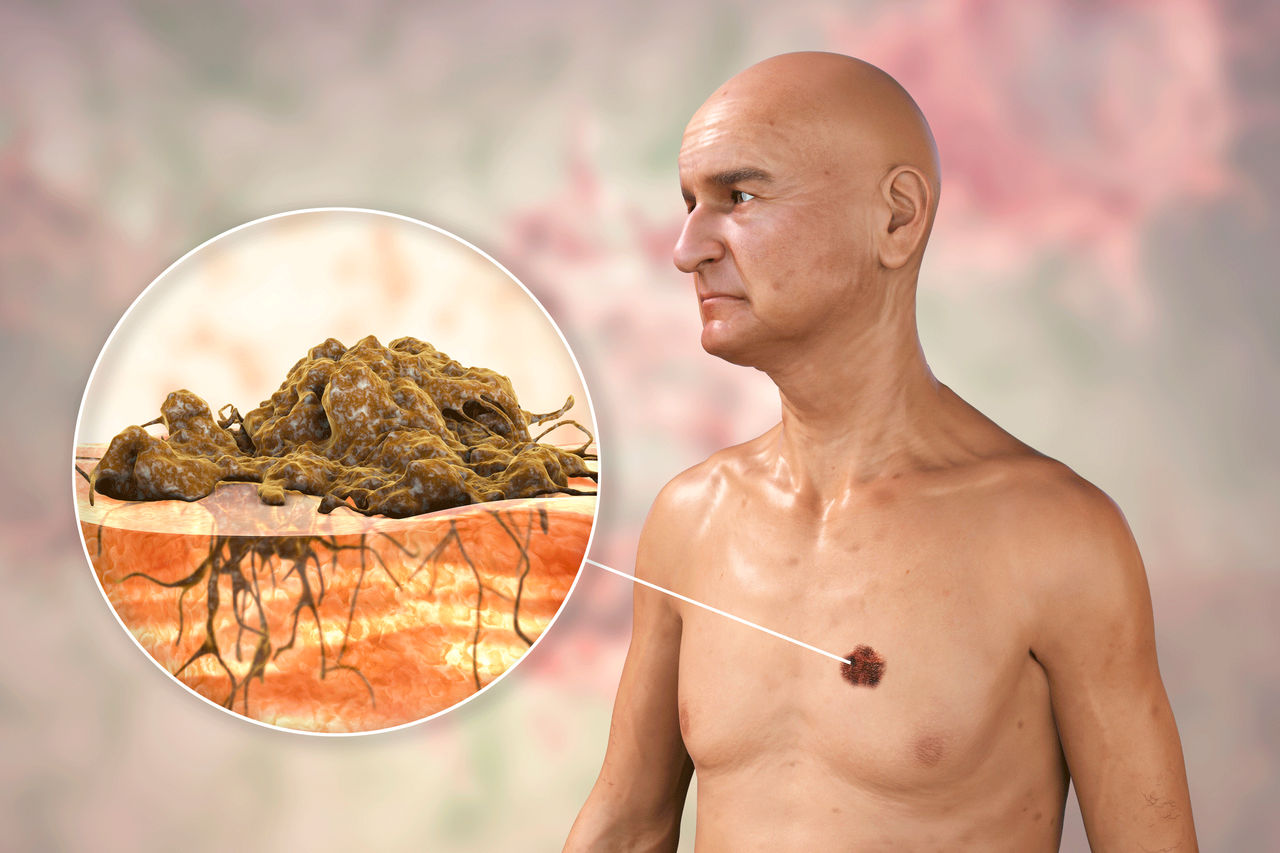Stages of Melanoma

Stages of melanoma tell you how deeply this cancer has grown into your skin and whether it has spread. The higher the stage number the more dangerous the problem.
To diagnose you with melanoma, the most serious form of skin cancer, your doctor will take a tissue sample, or biopsy, so a pathologist can examine it in a lab.
The biopsy and other tests will help your doctor determine the thickness of your tumor. Your doctor can also learn the extent of your melanoma, called its stage.
You may have melanoma in one specific area of your skin, but the cancer can move quickly to your lymph nodes. Ultimately, it can spread almost anywhere in your body.
YOU MIGHT ALSO LIKE: Know Early Melanoma Symptoms
Most commonly, melanoma spreads to your:
- Skin
- Lymph nodes in other parts of your body
- Lungs
- Liver
- Brain
- Bones
Your treatment plan and chance for a good outcome (prognosis) depend on the stage of your melanoma. They also depend on your general health, the location of your tumor, and other factors.
The TNM system
Doctors use different systems to measure the thickness of a melanoma and to stage the disease. The systems summarize the extent of your cancer.
The American Joint Committee on Cancer staging system is used most often for melanoma. It is called the TNM system.
- T (tumor). This category is based on the melanoma's thickness and whether it is ulcerated. The term ulcerated means that the layer of skin covering the melanoma is gone. There may be bleeding with ulceration. Ulceration is more serious because the cancer has a greater risk of spreading.
- N (lymph nodes). Lymph nodes are small groups of cells that help your body fight infections. This category indicates whether the melanoma has spread to your lymph nodes.
- M (metastasis). This category shows whether your cancer has spread to distant organs.
The TNM system involves two tests to measure the thickness of your melanoma.
- The Breslow measurement uses a ruler-like device to measure the thickness of the tumor in millimeters under a microscope.
- The Clark measurement describes the thickness of the tumor in relation to how far it penetrates into the layers of your skin.
In general, thinner- or lower-stage melanomas have a better prognosis.
Cancer staging numbers
Stages are named using a combination of 0 or the Roman numerals I to IV. The letters A through C note substages. Lower-stage cancers have a better outlook.
You can see a chart from the American Cancer Society here.
- Stage 0. In this stage, the melanoma is only in the top layer of your skin, called the epidermis. It is also called melanoma in situ. In situ means the cancer has remained confined, not spreading to other tissues.
- Stage IA. The tumor is in the epidermis and the upper part of the layer of skin under the epidermis, called the dermis. It is no more than 1 millimeter thick, with no ulceration, and appears to be growing slowly (has a low mitotic rate).
- Stage IB. The tumor is 1 to 2 mm thick, with no ulceration. Or it is not more than 1 mm thick, has no ulceration, and doesn’t have a high growth (mitotic) rate.
- Stage IIA. The tumor is 1 to 2 mm thick with ulceration. Or it is 2 to 4 mm thick with no ulceration.
- Stage IIB. The tumor is between 2 and 4 mm thick, with ulceration. Or it is more than 4 mm thick with no ulceration.
- Stage IIC. The tumor is thicker than 4 mm and is ulcerated.
- Stage III. The tumor may be any thickness.
In addition, one of these also applies:
- Stage IIIA is when surgical removal of the lymph node confirms that the tumor has spread into one to three nearby lymph nodes. The nodes are not enlarged, and the melanoma is found only when it’s looked at under a microscope. The melanoma is not ulcerated.
- Stage IIIB sometimes means there is no sign of the primary tumor, but there are cancer cells in nearby skin, in the lymphatic channels, or in one to three lymph nodes, which may or may not be enlarged. The melanoma may or may not be ulcerated.
- Stage IIIC means the melanoma has spread either to the lymphatic channels or to two or more nearby lymph nodes, which are enlarged. It can also mean the cancer has spread to four or more lymph nodes, to lymph nodes that are clumped together, or to both nearby lymph nodes and lymphatic channels.
- Stage IIID means the melanoma is ulcerated and has spread to four or more lymph nodes, to lymph nodes that are clumped together, or to both nearby lymph nodes and lymphatic channels.
- Stage IV means the tumor may be any thickness, with or without ulceration. It has spread to distant lymph nodes, areas of skin, or other organs in your body.
Updated:
March 20, 2023
Reviewed By:
Janet O'Dell, RN